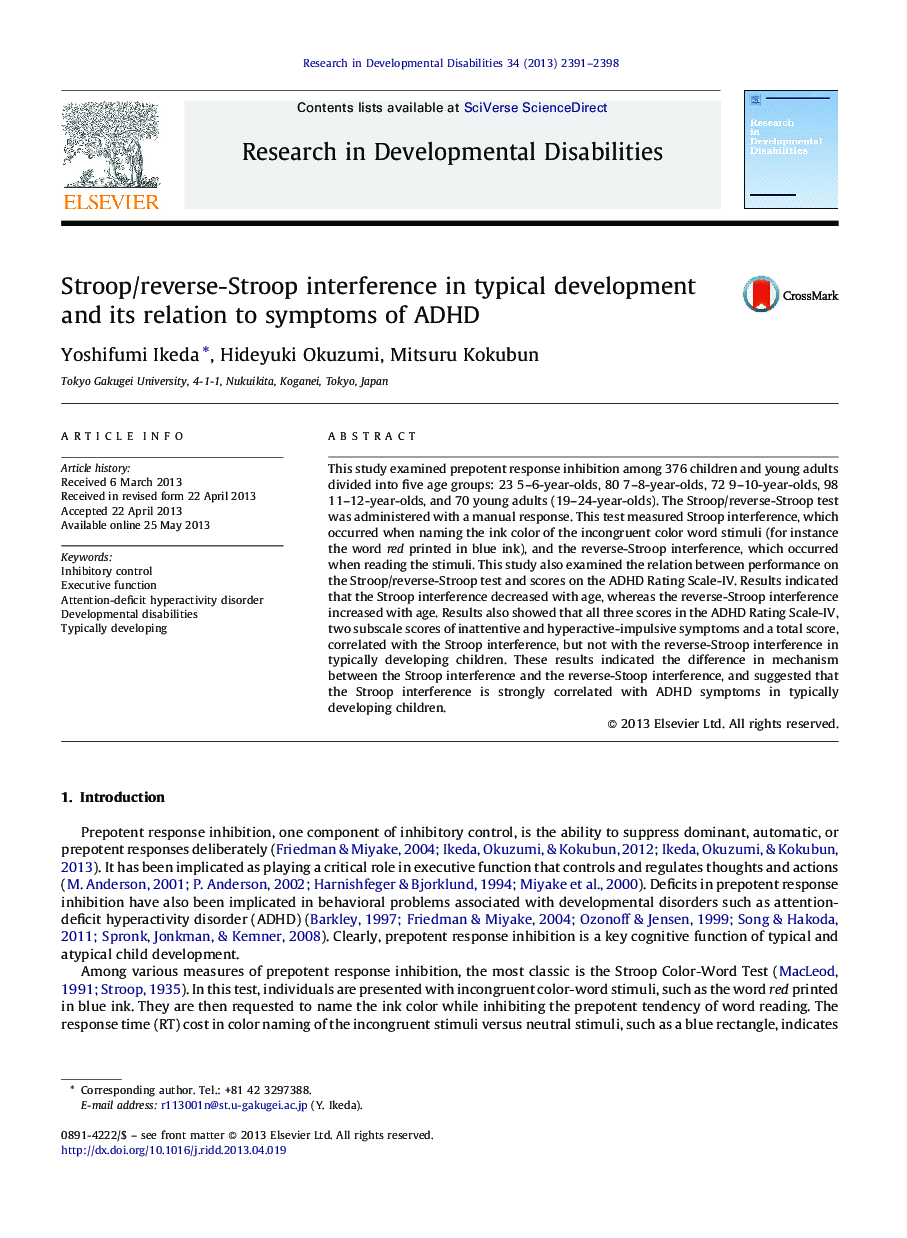| کد مقاله | کد نشریه | سال انتشار | مقاله انگلیسی | نسخه تمام متن |
|---|---|---|---|---|
| 371664 | 621936 | 2013 | 8 صفحه PDF | دانلود رایگان |

• The Stroop interference decreased with age.
• The reverse-Stroop interference increased with age.
• The mechanism was suggested to differ between the Stroop/reverse-Stroop interference.
• The Stroop interference correlated with behavioral problems related to ADHD.
This study examined prepotent response inhibition among 376 children and young adults divided into five age groups: 23 5–6-year-olds, 80 7–8-year-olds, 72 9–10-year-olds, 98 11–12-year-olds, and 70 young adults (19–24-year-olds). The Stroop/reverse-Stroop test was administered with a manual response. This test measured Stroop interference, which occurred when naming the ink color of the incongruent color word stimuli (for instance the word red printed in blue ink), and the reverse-Stroop interference, which occurred when reading the stimuli. This study also examined the relation between performance on the Stroop/reverse-Stroop test and scores on the ADHD Rating Scale-IV. Results indicated that the Stroop interference decreased with age, whereas the reverse-Stroop interference increased with age. Results also showed that all three scores in the ADHD Rating Scale-IV, two subscale scores of inattentive and hyperactive-impulsive symptoms and a total score, correlated with the Stroop interference, but not with the reverse-Stroop interference in typically developing children. These results indicated the difference in mechanism between the Stroop interference and the reverse-Stoop interference, and suggested that the Stroop interference is strongly correlated with ADHD symptoms in typically developing children.
Journal: Research in Developmental Disabilities - Volume 34, Issue 8, August 2013, Pages 2391–2398